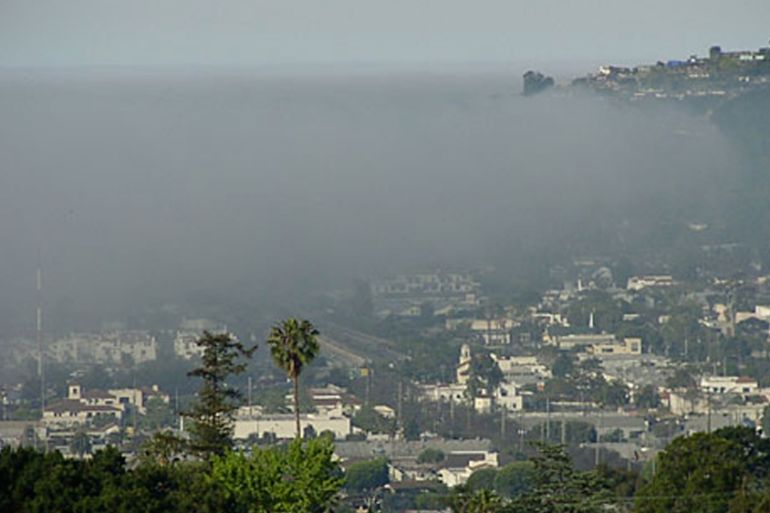What is ‘June Gloom’, and why it’s not all bad
This annual, seasonal weather phenomenon brings a measure of disappointment and relief to visitors and residents alike.

When you think of the US state of California, you typically conjure up images of beautiful beaches, palm trees and mountains, all set off by perpetual sunshine. However, if you were thinking of heading to the “golden state” for a vacation in June, you could be sorely disappointed.
“June Gloom” is seen all over the Pacific Coast, but is especially pronounced in southern California. It is when the entire coastline is shrouded in a layer of low-lying cloud, blocking out the sunshine and lowering temperatures to damp and chilly values.
Keep reading
list of 4 itemsAfter the Hurricane
World’s coral reefs face global bleaching crisis
Why is Germany maintaining economic ties with China?
During the month of May, the air starts to warm up and areas inland such as the Central Valley and the Mojave Desert undergo some intense heating, setting up a broad area of low pressure known as a thermal low.
The waters of the Pacific Ocean are still relatively cold and with high pressure developing over the cooler waters, a pressure gradient develops and pushes the cooler ocean air inland, which creates this marine layer of low-lying cloud.
The cloud develops overnight, creeping over the coastal land during the early morning hours, so that day breaks damp, foggy and gloomy, giving rise to the name June Gloom.
The clouds forming to produce this phenomenon are called “actinoform”. It was not until the dawn of the satellite era that these clouds were seen clearly for the first time, as they typically cover an area too large to observe any other way. The first recorded detection of actinoform cloud occurred on August 16, 1962, southwest of Hawaii.
As the day wears on and the moisture evaporates, the grey, foggy start will give way to mostly sunny skies, although even during gloomy mornings, about 12 to 16km away from the coast, the gloom tends not to appear at all, as the air is much drier.
The National Weather Service in San Diego, California, posted on Facebook that in June, only 58 percent of possible sunshine occurs, based on averages at San Diego International Airport and at southern California beaches, which typically see even less sunshine than the airport location.
Despite the regular, annual appearance of this weather phenomenon, June 2016 was a year without many sightings of June Gloom, thanks in part to the drought as well as El Nino.
“We didn’t get it. A lot of that had to do with lack of moisture,” Kathy Hoxsi, a meteorologist with the National Weather Service in Oxnard California, 100km north-west of Los Angeles, said.
This year with the official end of the five-year drought in California, there is a lot of moisture in all the waterways and according to the National Weather Service, “the long-range forecast looks to bring us the seasonal June Gloom”.
Not everyone sees these dull, foggy mornings as a bad thing: every cool, overcast day means one less oppressively hot summer day. You can go for a hike or a picnic and comfortably play sports as the air is cool and the ground is soft.
Beyond their role in everyday weather, clouds play an important role in regulating Earth’s temperature, reflecting solar radiation back into space during the day and trapping the heat at night.
June Gloom also means extra moisture for plants and vegetation in the mountains and hills which could mean a late start to the fire season, and that has to be a good thing.